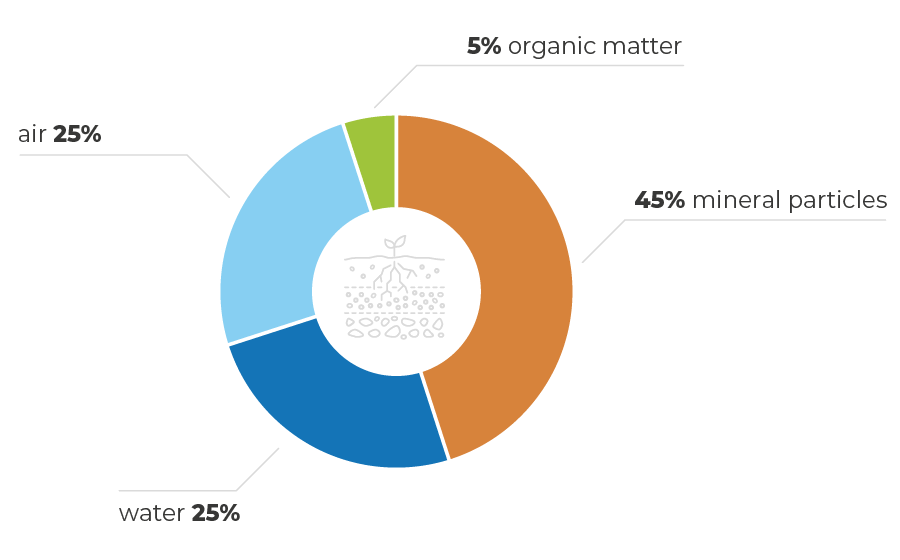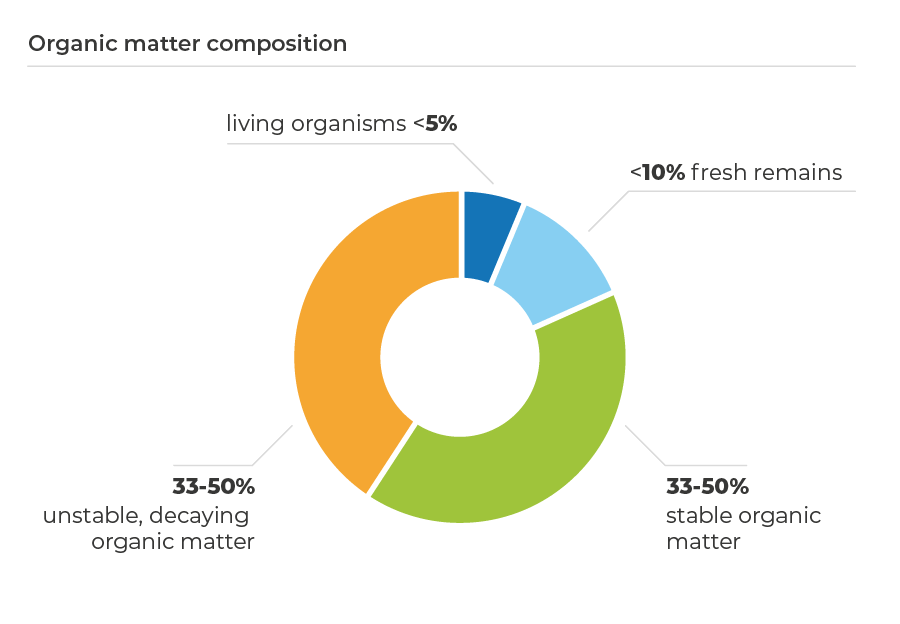Soil forms on the surface of the earth’s crust. It is a natural, biologically active, three-phase system (mineral and organic solids, water, air), formed from weathered rocks and dead and living organic matter. Soil is created and altered by climatic conditions, time, and living organisms, including microorganisms; since sedentary lifestyles, also humans.
Soil is a living system shaped by the activity of the soil organisms that inhabit it. Although at first glance, it resembles mineral material, it is in fact densely populated by a variety of organisms and contains both living and dead organic matter. Soil is formed with living organisms and non-living organic matter. Non-living organic matter includes not only humus, but also the faeces and dead bodies of soil invertebrates and the secretions of the fungi and roots of the plants that inhabit it.

Soil is an integral component of terrestrial and some shallow-water ecosystems. As soil users, we often treat the soil only as a temporary store of water and nutrients for plants. For this reason, only irrigation and fertilisation of the soil seem important to us, while we underestimate the importance of the microorganisms living in it. We readily notice only the presence of pathogenic microorganisms and wrongly ignore the role of other soil microorganisms in shaping soil fertility. By taking action to limit one group of micro-organisms, we also influence the development of other groups.

Soil characteristics are determined primarily by carbon compounds, which are mainly part of the organic matter determining its physical, chemical and biological properties and determining its fertility and fecundity. It is estimated that since the beginning of human agricultural use of soils, some 10,000 years ago, most cultivated soils have lost 50 – 75% of their carbon, or 30 to 60 tonnes per hectare, which has passed into the atmosphere in the form of carbon dioxide or methane. The loss of carbon from soils has occurred mainly due to the reclamation and drainage of waterlogged soils, ploughing and leaving the soil uncovered by crops, burning or carrying away the residues of the main crop and other crop residues from fields. In recent decades, soil degradation has resulted from the unsustainable management of soil organic matter (sale of straw, lack of use of manure, green manures), cultivation of monocultures and degradation of soils through erosion. It is estimated that ploughing alone can cause losses of up to 2 tonnes of carbon per hectare per year. To offset this, 8 to 10 tonnes of carbon would need to be supplied to the soil in the form of organic compounds. According to statistical calculations, we currently effectively lose an average of 0.53 tonnes of soil organic matter per year from each hectare of farmland, which would need to be offset by fertilising with 6 tonnes of manure. Due to the loss of carbon from the soil, most agriculturally used soils have a carbon stock below their ecological potential. This indicates a potential opportunity for soils to capture lost carbon and increase soil organic matter stocks. It is estimated that by implementing appropriate agricultural practices, soil fixation can offset around 15 per cent of man-made greenhouse gas emissions.
In order to increase the organic matter content of soils, a number of agricultural practices aimed at reducing the loss of carbon from the soil and even re-capturing it from the atmosphere into the soil are recommended. Agricultural practices that contribute to this include:
- no-till systems with mulching,
- inclusion in the rotation of crops to be ploughed in,
- maximising the time of soil coverage by plants or their residues,
- maintaining a positive balance of nutrient inputs to the soil,
- the use of animal manure or other organic matter, such as post-harvest residues, in the crop,
- the conversion of agriculturally weak land into perennial crops and the reclamation of degraded and waterlogged soils by enriching them with organic matter.
The need to abandon peatland cultivation is also indicated.
